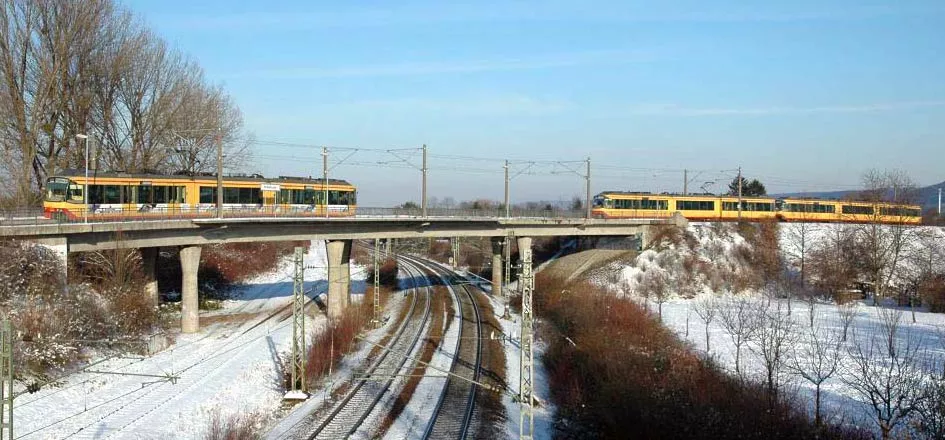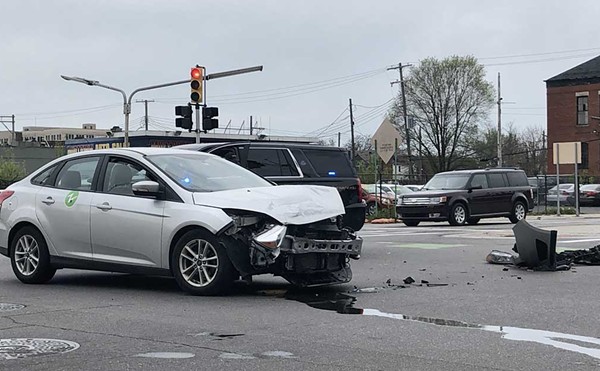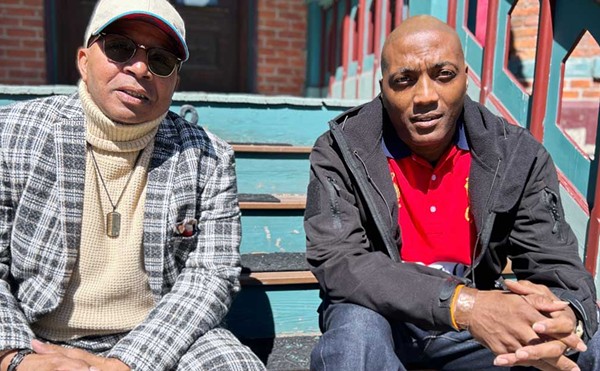I remember the first time I heard about the possibility of building light rail along Woodward Avenue. I thought that was really neat. I had visions of hopping on the train in Ferndale, where I lived, and going to Detroit Tigers' games.
That would have been especially appealing because I didn't have a car. That's because I was still in high school then ... and Lyndon Johnson was still president of the United States.
Guess what.
Damn good thing I decided not to wait for the morning train, and eventually bought a car. Long ago, it became painfully clear that I was no more going to see light rail in my lifetime than I was going to be summoned to play for the Tigers.
Yes, as my hair grayed and the country marched through war after war, Our Elected Leaders dangled the prospects of light rail before us from time to time. But anyone who looked below the surface and the talk of federal money for startup grants could see that Detroit's real problem with getting light rail was exactly the same one the Big Bopper made famous.
The Big Bopper, aka J.P. Richardson, is today best remembered as the least well-known of the musicians who died in the famous Day-the-Music-Died 1959 plane crash. He is relevant to this discussion because of the elegant philosophical view expressed in his one big hit: "Chantilly Lace":
This is it, put as succinctly as only he could:
"I ain't got no money, honey."
Neither does Detroit. So you might say I wasn't completely surprised when the government pulled the plug on the light rail plan last week. U.S. Transportation Secretary Ray LaHood politely said he was pulling the plug because he doubted the city could pay the operating costs.
Mayor Dave Bing and Gov. Rick Snyder supported that decision, which surprised some people. But what else could they do? As things now stand, the city is currently going to run out of cash for paper clips by spring. The governor has ordered a preliminary review of the city's finances, which is what they do when they are getting ready to name an emergency manager.
Had they decided to start a light rail system, my guess would be that we would have ended up in a few years, after hundreds of millions were squandered, with some abandoned trenches in the ground, and thousands of carless Detroiters would be no closer to actually being able to get to work.
Yet the transportation secretary did, to my delighted surprise, announce something that we can get excited about.
High-speed, rapid bus lines throughout Wayne, Oakland and Macomb counties. These wouldn't be your familiar dirty, frequently out-of-repair Detroit and suburban buses.
Those bus systems we have now are seldom punctual or efficient, and they certainly aren't coordinated. What the federal, state and local governments are doing instead, in Ray LaHood's words, is coming together "around a high-tech vision that will provide state-of-the-art, reliable transit to far more people and in a far more cost-effective way," than rail.
What they are proposing is a system of futuristic-looking buses that resemble train engines on wheels — and which are already in use in Los Angeles and Las Vegas. These buses have accordion-like pleats in the center and special technology to allow them to control traffic signals. That means they wouldn't have to stop for red lights. Bing, Snyder and LaHood are talking about four lines and, at least to start, 34 stations.
Sixteen of these would be in Wayne County; nine each in Oakland and Macomb. That makes far more sense than a light rail line that only goes as far as the Detroit border. Most people in the city who have jobs work in communities outside Detroit.
Light rail would take years and years to build, even if money were not a problem. Rapid bus service could be a reality within three to five years, everyone in the know says.
There is a catch: The Michigan Legislature would have to approve a rapid bus system, and do it soon. Transportation Secretary LaHood says he is prepared to offer the metro area millions to help build this — but under two conditions.
Besides legislative approval, our leaders, whoever they are, would have to set up an approved body to run the new systems. Plus, money would have to be found to pay the annual operating costs. That would likely mean a regional tax.
That's something that would have to be approved by the voters. Getting this through the Legislature ought to be possible, may not be all that easy. There are a number of people in there who hate, fear and distrust Detroit, and are unwilling to consider anything they might see as helping the city.
There are others who think anything any government does is bad, and anything paid for with tax dollars is worse, except, that is, for their own salaries.
Nevertheless, it should be a lot easier to get support for rapid buses than rapid rail. But what is threatening most to sabotage this is not the Tea Party fanatics but the die-hard mass transit supporters, who are bawling "trains of nothing."
TRU, or Transportation Riders United, issued a press release claiming light rail "could have brought in $2-$3 billion in new economic development," and produced far more tax revenue than needed to run the system.
Mayor Bing, they charged, has tossed away "an economic development opportunity that could have been the centerpiece of Detroit's revitalization."
How a much longer people mover up Woodward would have done any of that is a mystery to me, but in any event, I'd refer them to the sainted Big Bopper's answer to that question.
To be sure TRU does say "the rapid bus project that has been proposed is a good step and something that our region very much needs." Here's the problem, however.
Politics is the art of the possible. And politically and economically speaking, we are never going to get light rail. Not in this generation; not in the foreseeable future. We can get a rapid bus service if we all fight for it.
Nobody sane can doubt that this would be better than we have now. Yet we strongly risk not getting anything if we don't fight for a rapid bus line, fight hard, and do it now.
Otherwise, we can watch things just keep getting worse.
Go Wayne State: Last weekend, the Wayne State Warriors almost won the NCAA national football Division II championship, losing a heartbreaking final playoff game.
Nevertheless, I think everybody in Michigan ought to adopt them as Our Team, and the example of what a football team should be. (Yes, I teach there. But I also went to both the University of Michigan and Michigan State.) U of M spends $110 million a year on athletics, the lion's share on football.
Wayne State's budget was $195,000, for the whole team, for the whole year. The team had to scrape to find a few thousand extra for warm weather gear for the playoffs.
Athletic Director Ron Fournier told Crain's Detroit Business, "Football isn't going to run the campus. Academics are." He might be shot for saying that some places.
But to me, he and his team are heroes.






